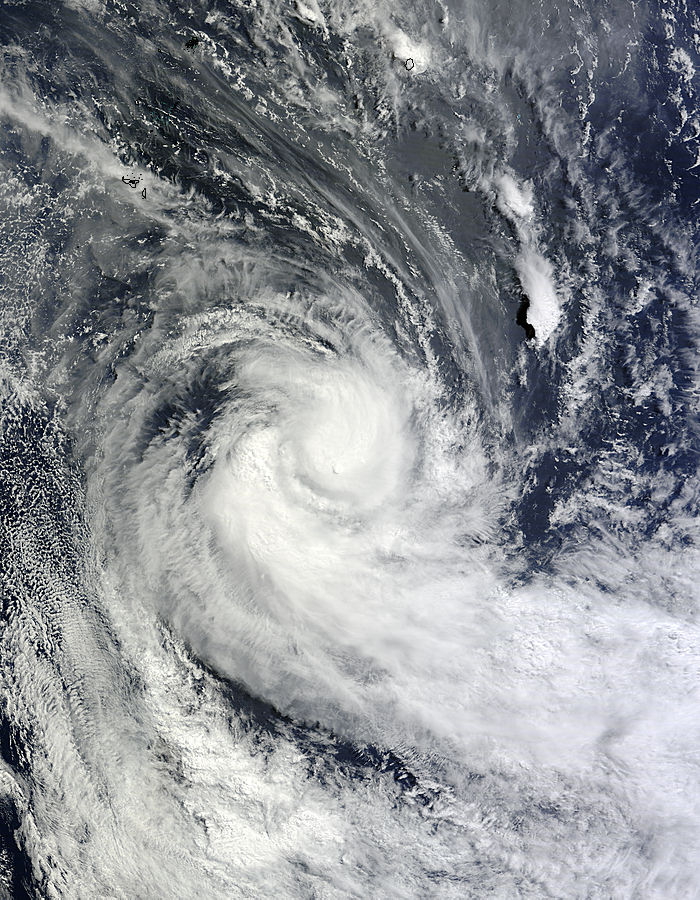NASA Satellite Catches Last Glimpse of Kofi as a Tropical Cyclone

NASA's Terra satellite captured this image of Tropical Cyclone Kofi in the South Pacific Ocean on March 3 at 21:50 UTC before it made the total transition into an extra-tropical storm. Image Credit: NASA Goddard MODIS Rapid Response Team
The Moderate Resolution Imaging Spectroradiometer, or MODIS for short captured an image of Tropical Cyclone Kofi in the South Pacific Ocean on March 3 at 21:50 UTC before it made the total transition into an extra-tropical storm.
MODIS is one of the instruments that flies aboard NASA's Terra satellite. The MODIS image showed that despite transitioning, Kofi still had good circulation.
The highest and strongest thunderstorms appeared around the center of circulation and in a band west of the center.
Forecasters at the Joint Typhoon Warning Center or JTWC issued their final warning on Kofi on March 3 at 2100 UTC/4 p.m. EST.
At that time, Kofi was centered near 30.5 south latitude and 164.3 west longitude, about 1,034 nautical miles/1,190 miles/1,915 km south-southeast of Pago Pago, American Samoa.
Kofi had almost completed extra-tropical transitioning and was speeding to the east-southeast at 28 knots/32.2 mph/51.8 kph.
Kofi's maximum sustained winds were near 40 knots/46.0 mph/74.0 kph. JTWC expects Kofi to complete transition into an extra-tropical storm on March 4 and weaken over the coming days.
Text credit: Rob Gutro
NASA's Goddard Space Flight Center
Media Contact
All latest news from the category: Earth Sciences
Earth Sciences (also referred to as Geosciences), which deals with basic issues surrounding our planet, plays a vital role in the area of energy and raw materials supply.
Earth Sciences comprises subjects such as geology, geography, geological informatics, paleontology, mineralogy, petrography, crystallography, geophysics, geodesy, glaciology, cartography, photogrammetry, meteorology and seismology, early-warning systems, earthquake research and polar research.
Newest articles

Properties of new materials for microchips
… can now be measured well. Reseachers of Delft University of Technology demonstrated measuring performance properties of ultrathin silicon membranes. Making ever smaller and more powerful chips requires new ultrathin…

Floating solar’s potential
… to support sustainable development by addressing climate, water, and energy goals holistically. A new study published this week in Nature Energy raises the potential for floating solar photovoltaics (FPV)…

Skyrmions move at record speeds
… a step towards the computing of the future. An international research team led by scientists from the CNRS1 has discovered that the magnetic nanobubbles2 known as skyrmions can be…




















